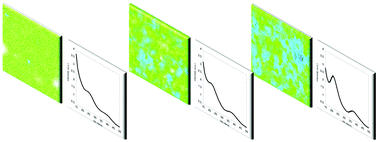Interplay between synthetic conditions and micromorphology in poly(3,4-ethylenedioxythiophene):tosylate (PEDOT:Tos): an atomistic investigation†
Abstract
Micromorphology of conjugated polymers is expected to play a crucial role in both heat and charge transport properties. In this perspective, the details of the polymerization mechanism acquire a fundamental relevance, providing the link between the basic chemical reaction paths and the resulting molecular structure and arrangement. For PEDOT, the role played by the Brønsted bases (proton scavengers) and their impact on the distribution of polymer chain lengths are still a matter of debate. In the present work, we have systematically analyzed several reaction paths leading to PEDOT polymerization. By means of atomistic simulations, we identified the thermodynamically preferred reaction path, proving that tosylate anions rule proton scavenging. PEDOT chain length was computed to be ∼12–13 monomeric units. We could also demonstrate how the proton scavengers set at once the chain lengths and the sample crystallinity. Furthermore, we found that tosylate gives rise to a sharper multimodal distribution of chain length, a feature that supports hypotheses regarding the occurrence of a percolative transport regime mediated by tie chains bridging paracrystalline regions.



 Please wait while we load your content...
Please wait while we load your content...